Ijraset Journal For Research in Applied Science and Engineering Technology
- Home / Ijraset
- On This Page
- Abstract
- Introduction
- Conclusion
- References
- Copyright
Experimental Investigation and Design Analysis of Hollow Glass Microsphere loaded PP/ABS Composites
Authors: Shreyas Biswas
DOI Link: https://doi.org/10.22214/ijraset.2022.39867
Certificate: View Certificate
Abstract
The objective of the present is to investigate hollow glass microspheres (HGMs) experimentally and carry out design analysis of hollow glass microsphere loaded PP/ABS composites. The tensile and notched Charpy impact test of HGM-filled acrylonitrile-butadiene-styrene copolymer (ABS) and Polypropylene (PP) composites will be studied with varying the concentrations of PP/ABS composite with HGM. Also further the design analysis will be studied by conducting the simulation under the same criteria and comparing the results at the end. This is done to introduce a light weight material without compromising specific strength of PP/ABS composite by adding HGM to the composite.
Introduction
I. INTRODUCTION
With the increase in industrial demands it is very essential to build materials that are strong but have less weight.Vivek et al. [13] investigated the effect of nano-sized alumina particles in ABS thermoplastic composites in which ABS was reinforced with nano-sized alumina particles via melt compounding.SEM micrographs revealed a higher dispersion rate, and ABS demonstrated a 10% increase in weight loss at a specific temperature. At 3vol% alumina content, the flexural modulus increases by about 23%.Budrun et al. [4] experimentally examined the mechanical and physical behaviors of the ABS reinforced with palm fiber.
Dunne et al. [11] pragmatically carried out the Mechanical testing of natural fibre composites using an acrylonitrile butadiene styrene matrix (ABS). The poroelastic natural fibre composites had tensile strengths ranging from 171 to 599 kPa. The airflow resistivity of 100 percent kenaf was found to be the highest. The 50% kenaf composite had the lowest airflow resistivity and tensile strength, but also the lowest density, which is a good thing. The densities of the poroelastic natural fibre composites still need to be optimized. S.M.D Mastan et al. [12] empirically determined that in the presence of a compatibilizer, hybrid PP/ABS reinforced fillers were successfully prepared using a twin-screw extruder followed by injection moulding. The addition of hybrid fillers increases the percent crystallinity of the PP phase in a PP/ABS blend, as does the thermal stability of the PP/ABS blend.
Kareem et al. [7] kept the figures in which the matrix is made of polypropylene, and the filler is made of waste tyre particles and the PP had a density of 960 kg/m3 and a flow index of 1.35 gm/min.The coefficient of thermal expansion for rubber particles polypropylene composite is 0.00022 mm/ mmC on average across the entire temperature range, which is 20% lower than the CTE of PP. As a result, the CTE of rubber particles polypropylene composite is lower than that of PP polymer, resulting in rubber particles polypropylene composite having better dimensional stability than PP polymer. Ganesh et al. [5] mixed ABS as a rubber phase copolymer and carbon black (CB) as a filler material.Tensile strength and Tensile Modulus Were Increased By Adding a 2.5 Wt% Of Cb Filled 80/20(Wt/Wt) Pp/Abs Blends, And Impact Strength Was increased by adding 5 wt% of CB filled 80/20(wt/wt) PP/ABS blends.
Bruno et al. [3] mentioned about the pellets that were made by combining chopped carbon fibre in two lengths (3 mm and 6 mm) with ABS GP-35 at two different weight percentages (5 percent wt and 16.7 percent wt). At temperatures above 200°C, the ABS polymer displayed signs of degradation in the FTIR spectra.Aiah Mohamed et al. [2] investigated the mechanical, melt-flow, and morphological actions of perlite reinforced ABS composites.Tensile strength of ABS/PER composites improved with 2.5 percent and 5 percent PER inclusions.Further additions resulted in a decrease in tensile strength values which was further examined by SEM on identifying presence of weak interfacial interactions.
The aims of the study are:
- To fabricate hollow glass microsphere loaded PP/ABS composites with different weight% of HGM.
- Carry out Experimental Investigation to test the strength of the various samples.
II. EXPERIMENTAL WORK
A. Materials Required
Polypropylene is chosen as matrix due to its huge usage in market and easiness in making a composite. The benefits of polypropylene (PP) include high heat alteration in temperature, better processibility, and low cost. Its only drawback is that it has lower impact properties. It is combined with Acrylobutadiene Styrene for this purpose (ABS). Among the various polymers, PP is a critical plastic commodity that is widely used to manufacture products by a variety of industries..They are also used in buildings and switch boards for their insulation property. Hollow glass microsphere is chosen as the particle reinforcement for its low density and high compressive strength. Polypropylene is selected due to its immense applications in commercial market and it can be easily moulded into a composite. Polypropylene (Injection Grade-H110MA) was procured from Guntur after thorough search in Chennai and Bangalore. The composite is to be manufactured with PP/ABS as matrix and hollow glass microsphere as the particle reinforcement. The weight percentage of hollow glass microsphere in the PP/ABS matrix is varied to enhance both mechanical and thermal properties of the matrix. Samples with varying weight percentage of hollow glass microspheres are extruded and further moulded for tension and impact tests using injection moulding machine. Mould for compression test sample is not available.
B. Mixing of Particles with Matrix
Polypropylene/Acrylobutadiene Styrene matrix is mixed with hollow glass microsphere. Five samples are prepared having the following weight percentage of HGM - 0, 5, 10, 15 and 20. The remaining weight percentage in the sample consists of polypropylene. Each sample has a total weight of 100 grams. Weight of the sample constituents is carefully measured by the weight balance and is stored in beakers for further processing. Beakers are covered with aluminium foil. The five beakers are dried in an oven in vacuum environment for one hour to remove any moisture present in the sample at a temperature of 40 degree Celsius.
C. Preparation of Composite
Four plastic bags containing the matrix of weight 150 grams is used in the twin screw extruder to clean any sample left over from the previous operation. Temperature in the three chambers of the twin screw extruder are 120, 220, 250 degree Celsius to ensure that the sample can be extruded without degradation. The samples are fed into the twin screw extruder in conical flask with help of spatula. While the mixture travels through the heating chambers of extruder, mixture gets heated and gets melted. This melted mixture is received at the other end of extruder through a small circular cross section hole in the form of continuous wire. Feeding of mixture in the flask should be slow enough especially with samples with higher composition of hollow glass microspheres as it being in the nature of powder tends to get carried away in the air. Extruded material obtained from the extruder is pulled at the correct speed to ensure the correct thickness. Too high speed results in a thin cylindrical mixture whereas during a slow speed the sample tends to wound near the extrusion hole. The extruded material coming out initially from the hole is ignored as it may contain constituents of the previous sample which was extruded. Collected extruded material is further chopped into small pieces for ease of storing, carrying and injection purpose.
D. Injection Moulding
Tensile and Impact samples are prepared by injection moulding process.The chopped pieces are fed into the injection moulding machine through a conical flask to make two UTM moulds and two Impact moulds for each sample. The temperature is set at 235 degree Celsius in the machine for the sample to be forced into the mould. The mould is kept in the injection moulding machine for three minutes so it is at a higher temperature which reduced thermal cracking and allows more uniform heating.After injection, the mould is opened and the Tension / Impact mould is extracted by a hammer and nail. Impact sample was also prepared by the same procedure with the mould being changed to get the desired shape for the impact sample.
E. Tensile Test
The tensile strength of the PP/ABS and hollow glass microspheres composite specimen is tested using a Universal Tensile Testing machine. The test specimen was prepared in accordance with ASTM standards D3037/3039. Injection moulding was used to create two dumbbell-shaped samples of each set of PP/ABS composites with different compositions of hollow glass microspheres. The width and thickness of dumbbell bridge samples were measured using a digital Vernier Calliper.The test was performed at a pulling rate of 3mm/min. After the sample was measured, the software recorded the tensile strength, modulus, and elongation at break. SEM was used to examine the tensile fracture surface in order to determine the nature of the fracture.
F. Impact Test
The impact strength of the PP/ABS and hollow glass microspheres composite specimen was tested using an impact testing machine. The apparatus is made up of a known mass and length pendulum that is dropped from a known height to strike a notched specimen of material. The amount of energy transferred to the material can be calculated by comparing the height of the hammer before and after the fracture (energy absorbed by the fracture event).
G. Scanning Electron Microscopy(SEM)
SEM is an important characterization tool to directly imaging micro particles in order to obtain quantitative measures of particle, grain size, and morphology.The fractured surfaces of the HGM reinforced with PP/ABS composite were SEM-ed to investigate the HGM-PP/ABS interaction and the microstructural changes that occur when HGM is incorporated into the PP/ABS matrix.
III. RESULTS AND DISCUSSIONS
A. Density
TABLE I
Experimental Density of Each Sample
|
Sample Designation |
Sample Name |
Density(g/cm3) |
|
PA |
80% PP+ 20% ABS |
0.958 |
|
PAH5 |
95% PP/ABS+ 5% HGM |
0.781 |
|
PAH10 |
90% PP/ABS+ 10% HGM |
0.623 |
|
PAH15 |
85% PP/ABS+ 15% HGM |
0.537 |
|
PAH20 |
80% PP/ABS+ 20% HGM |
0.518 |
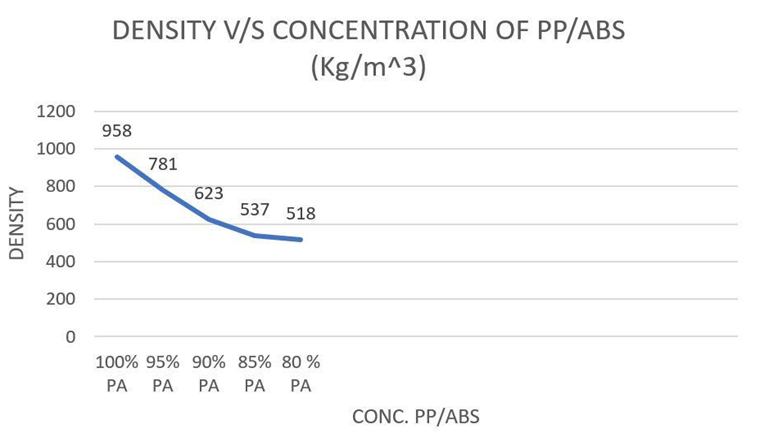
Fig. 1 Density of Each Sample
Results from Table I and Fig. 1 show the decrease in density as the percentage of HGM increases in the composite of PP/ABS with minimum of 0.518 at 20% . Structure of hollow glass microspheres is hollow by nature. Thus, sample having higher weight percentage of hollow glass microspheres will have lower density than those with lower percentage.
A. Tensile Strength
TABLE III
Tensile Strength of Each Sample
|
Sample Designation |
Maximum Load(N) |
UTS(MPa) |
Modulus(GPa) |
|
PA |
270.33091 |
34 |
0.57409 |
|
PAH5 |
200.92726 |
25 |
0.643923 |
|
PAH10 |
134.31311 |
17 |
0.589527 |
|
PAH15 |
113.99984 |
15.12 |
0.74301 |
|
PAH20 |
96.21382 |
12 |
0.793155 |
Results from Table 3.2 show that the composite has a maximum value of Ultimate Tensile strength of 34 when hollow glass microsphere are absent. The composite has a maximum value of Young’s Modulus of 0.793155 when weight percentage of hollow glass microspheres is 20% in the composite.
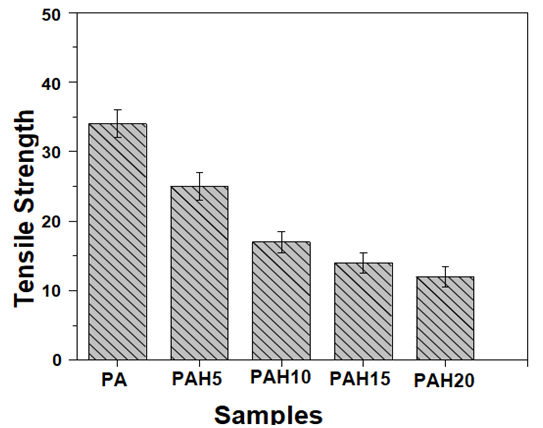
Fig. 2 Tensile strength of PP/ABS based composites with the variation of HGM
C. Ansys Simulation

Fig. 3 (a)Ansys Simulation for pure PP/ABS Composite and (b)Results for Ansys simulation (PP/ABS).
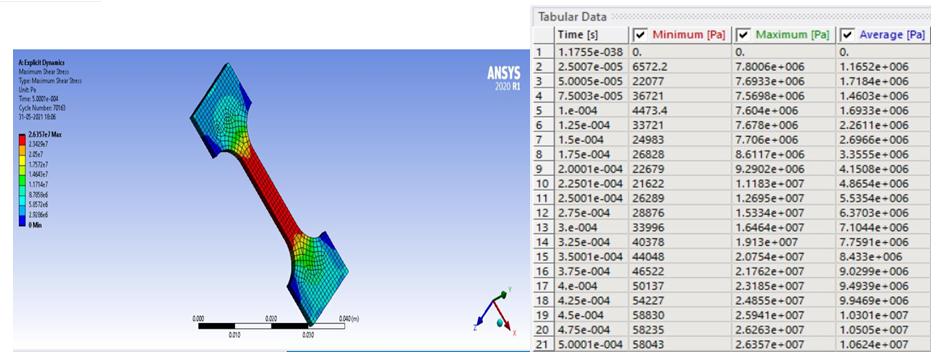
Fig. 4 (a)Ansys Simulation for 5% HGM in PP/ABS Composite and (b)Results for Ansys simulation (PP/ABS) with 5% HGM.
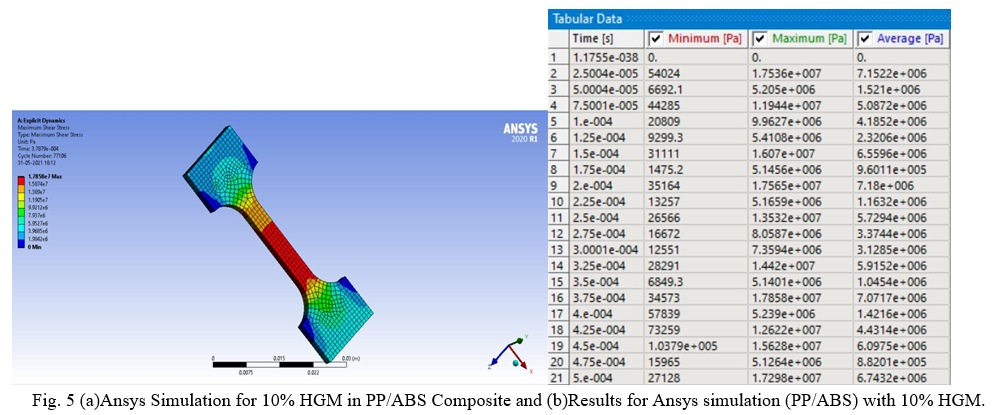
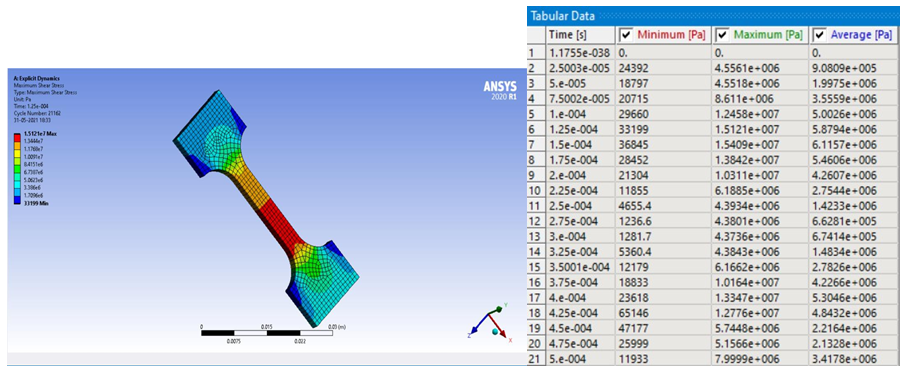
Fig. 6 (a)Ansys Simulation for 15% HGM in PP/ABS Composite and (b)Results for Ansys simulation (PP/ABS) with 15% HGM.
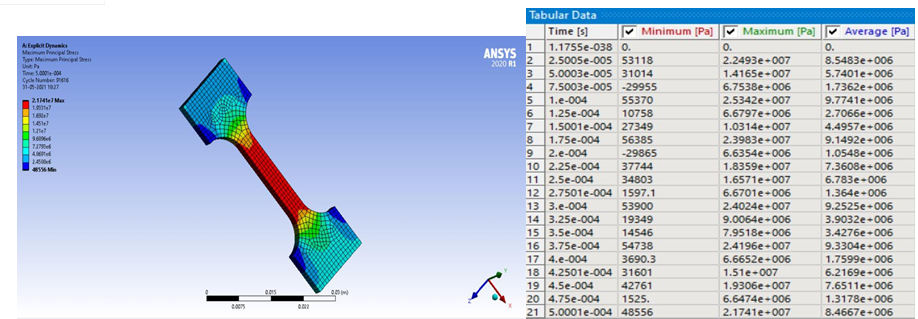
Fig. 7 (a)Ansys Simulation for 20% HGM in PP/ABS Composite and (b)Results for Ansys simulation (PP/ABS) with 20% HGM.
TABLE IIIII
Results of Ansys Simulation Compiled with Experimental Results
|
Sample |
Maximum Load(N) |
Modulus(GPa) |
UTS(MPa) |
ANSYS UTS |
|
PA |
270.33091 |
0.57409 |
34 |
33.6 |
|
PAH5 |
200.92726 |
0.643923 |
25 |
26.36 |
|
PAH10 |
134.31311 |
0.589527 |
17 |
17.2 |
|
PAH15 |
113.9984 |
0.74301 |
15.12 |
16.03 |
|
PAH20 |
94.21382 |
0.79315 |
12 |
11.36 |
The results of experimentation and simulation for tensile stress match each other with minor error as shown in Table III.
D. Impact Energy
TABLE IVV
Results of Ansys Simulation Compiled with Experimental Results
|
Sample |
Impact Energy(kJ/m) |
|
PA |
0.321 |
|
PAH5 |
0.394 |
|
PAH10 |
0.461 |
|
PAH15 |
0.512 |
|
PAH20 |
0.423 |
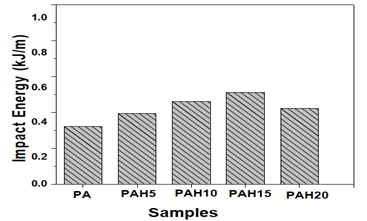
Fig. 8 Impact energy of PP/ABS based composites with the variation of HGM.
Results from Table IV and Fig. 8, show there is an increase in Impact Energy among the samples up to a concentration of 15% of HGM by weight in the composite, but decreases on further increase in concentration of HGM.
Table V
Effect on Tensile and Impact Strength of PP/ABS Composite
|
Composite Concentration(PP/ABS) |
Percentage Decrease in Tensile Strength |
Percentage Increase in Impact Strength |
|
With 5% HGM |
26.47% |
22.74% |
|
With 10% HGM |
50% |
43.6% |
|
With 15% HGM |
58.8% |
59.5% |
|
With 20% HGM |
64.7% |
31.77% |
It is advisable to use polymer composite with either 85 or 90 weight percentage of PP/ABS (Table V) if high impact strength is required as they exhibit the highest impact strength and absorb more energy per unit area compared to others.
E. Scanning Electron Microscopy
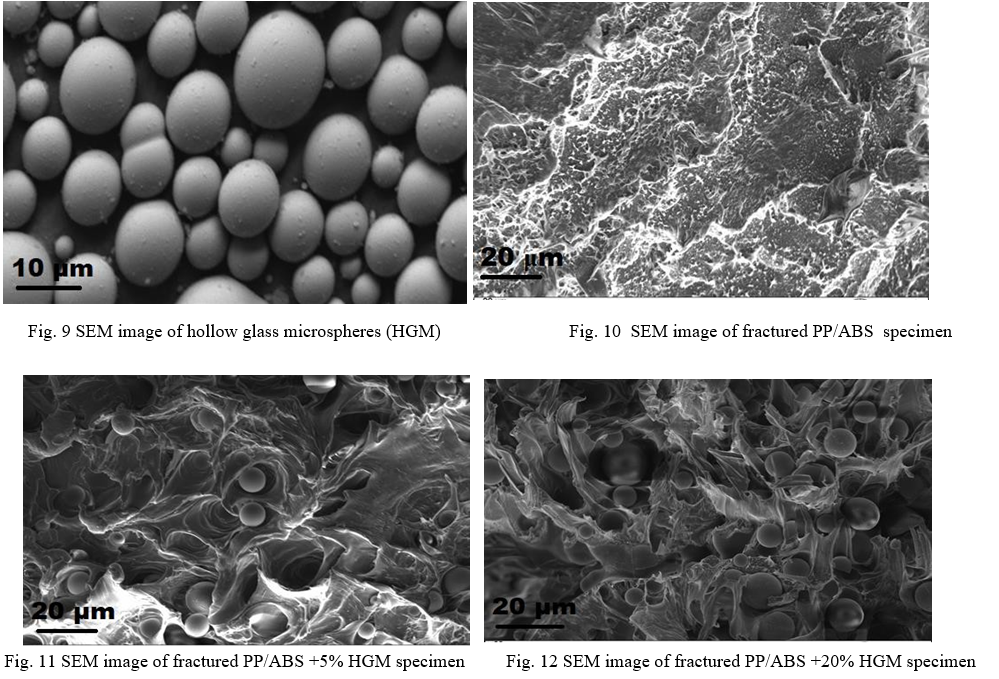
Fig. 9 HGM's SEM micrograph is shown. The morphological characteristics of these HGMs are spheres with smooth surfaces and average diameters ranging from 10 to 50 m.The fractured surfaces of the HGM reinforced with PP/ABS composite were SEM-ed to investigate the HGM-PP/ABS interaction and the microstructural changes that occur when HGM is incorporated into the PP/ABS matrix. The fractured surface of the pure PP/ABS specimen was micrographed (Fig. 10), The fracture has been observed to be brittle in nature.The fractured surface is smooth with very little roughness.The SEM micrographs of the HGM/PP/ABS composite show that the HGM has good contact with the PP/ABS matrix (Fig. 11 and 12). The morphology of the fractured surface changes dramatically after the HGM content is introduced. In the presence of HGM, the smoothness of the fractured surface decreases, indicating a brittle to ductile transformation in the composite matrix.
IV. ACKNOWLEDGMENT
The Author would like to take this opportunity to ackmowledge the financial support and opportunities provided bz Vellore Institute of Technology (Vellore),India for carrying out this research work.
Conclusion
A. In this work, the effect of addition of hollow glass microspheres to PP/ABS matrix was studied .Because of the hollow structure of hollow glass microspheres, samples with a higher weight percentage of hollow glass microspheres have a lower density than those with a lower weight percentage. B. Tensile stress at break decreases as the weight percentage of hollow glass microspheres increases in PP/ABS matrix. C. The composite has a maximum value of Young’s Modulus when weight percentage of hollow glass microspheres is 20% in the composite. D. Value of true strain at maximum load is higher in sample having 10 percentage of hollow glass microspheres in the PP/ABS matrix. E. SEM micrographs of the composite show that the hollow glass microspheres make good contact with the PP/ABS matrix. With the addition of hollow glass microsphere content, there is a significant and noticeable difference in the morphology of the fractured surface\'s surface. F. The presence of hollow glass microspheres reduces the smoothness of the fractured surface, implying a brittle to ductile transformation in the composite material.
References
[1] A.H.M. Mokhtar, M.U. Wahit, M.Hasan, M. Al and H. Ibrahim, “Mechanical properties and morphology of Polypropelene/poly(Acrylonitrile- Butadiene-Styrene( nanocomposites:Effect of compatibilizer and montmorillonite content”,Jorunal of Elastomers and Plastics, May 2016. [2] A. M. Alghadi, S. Tirkes and U. Tayfun, “Mechanical, Thermo-Mechanical and morphological characterization of ABS based composites loaded with perlite mineral”, Mater. Res. Express, vol 7, 2020. [3] B. J. Lopes, J. Roberto and M. d’Almeida, “Initial development and characterization of carbon fiber reinforced ABS for future Additive Manufacturing applications”, Materials Today:Proceedings, vol. 8, pp. 719-730, 2019. [4] B. Neher, Md. Mahbubur, Md. M. Rahman, H.Kabir, Md. R. Qadir, Md. A. Gafur andF. Ahmed, “Study of Mechanical and Physical Properties of Palm Fiber Reinforced Acrylonitrile Butadiene Styrene Composite, Material Sciences and Applications, January 2014. [5] G. S. Lohar and B. F. Jogi, “Influence of Carbon Black*CB( on Mechanical Behaviour and Microscopic Analysis of Polypropelene(PP)/Acrylonitrile Butadiene Styrene(ABS) Nanocomposites”, 2nd International Conference on Materials Manufacturing and Design Engineering. [6] H. Zhu, D. Zhang, T. Wanga, H. Wua and V. C. Li, “Mechanical and Self-healing behaviour of low carbon engineered cementitious composites reinforced with PP-fibers”, Construction and Building of Materials, 2020. [7] K. F. A. Elenien, A. Abdel-Wahab, R. ElGamsy and M. H. Abdellatif, “Asessment of the properties of PP composite with addition of recycled tire rubber”, Ain Shams Engineering Journal, 2018. [8] K. Wang, S. Li,Y. Rao, Y. Wu,Y. Peng, S. Yao, H. Zhang and S. Ahzi, “Surface and Structural Properties of Medical Acrylonitrile Butadiene Styrene modified with Silver Nanoparticles”,Polymers, 2019. [9] K. Wang, S. Li,Y. Rao, Y. Wu,Y. Peng, S. Yao, H. Zhang and S. Ahzi, “Flexure Behaviours of ABS-Based Composites containing Carbon and Kevlar Fibers by Material Extrusion 3D Printing”,Polymers, 2019, [10] M. Harris, J. Potgieter, S. Ray, R. Archer and K. M. Arif, “Acrylonitrile Butadene Styrene and Polypropylene Blend with enhanced Thermal and Mechanical Properties for Fused Filament Fabrication”, Materials, 2019. [11] R. Dunne, D. Desai and R. Sadiku, “Materail characterization of blended Sisal-Kenaf composites with an ABS matrix, Composites Science and Technology, 2017. [12] S. M. D. M. Saheb, P. Tambe and M. Malathi, “Mechanical and Thermal Behaviour of Hybrid Filler Renforced PP/ABS Blend”, School of Advanced Sciences VIT University, Vellore, India, July 2017. [13] V Kumar, J. RamKumar, S. Aravindan, S. K. Malhotra, K. Vijai and M. Shukla, “Fabrication and characterization of ABS nano composite reinforced by nano sized alumina particulates”, International Journal of Plastics Technology, December 2009. [14] Y. Liao, X. Wu, X. Peng, Z. Zhou, KJ. Wu, F. Wu, T. Jiang, J. Chen, L. Zhu and T. Yi, “Enhancing the mechanical and thermal properties of polypropylene composite byencapsulating styrene acrylonitrile with ammonium polyphosphate, International Journal, BMC Chemistry, 2019.
Copyright
Copyright © 2022 Shreyas Biswas. This is an open access article distributed under the Creative Commons Attribution License, which permits unrestricted use, distribution, and reproduction in any medium, provided the original work is properly cited.

Download Paper
Paper Id : IJRASET39867
Publish Date : 2022-01-09
ISSN : 2321-9653
Publisher Name : IJRASET
DOI Link : Click Here
 Submit Paper Online
Submit Paper Online

